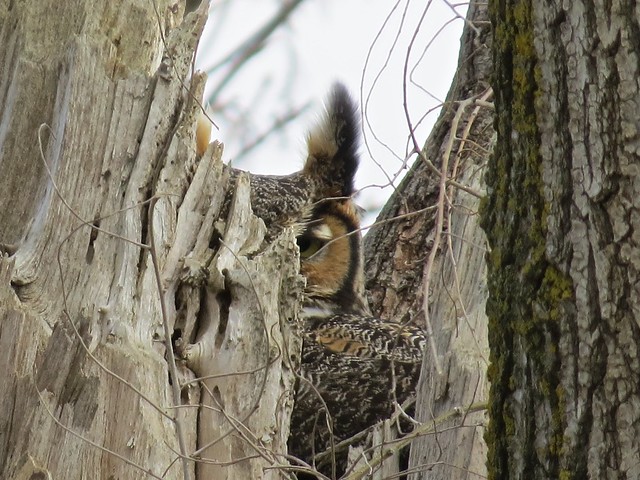
This week I saw three different bird species that are named after their "horns." On Thursday, I photographed this Great Horned Owl sitting on its nest at Salem Ranch in Flanagan, IL.


Then on Friday morning , I photographed this Horned Grebe at Lake Bloomington.

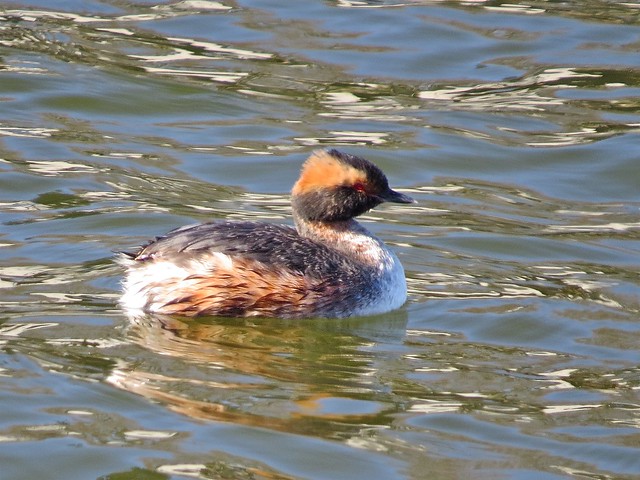
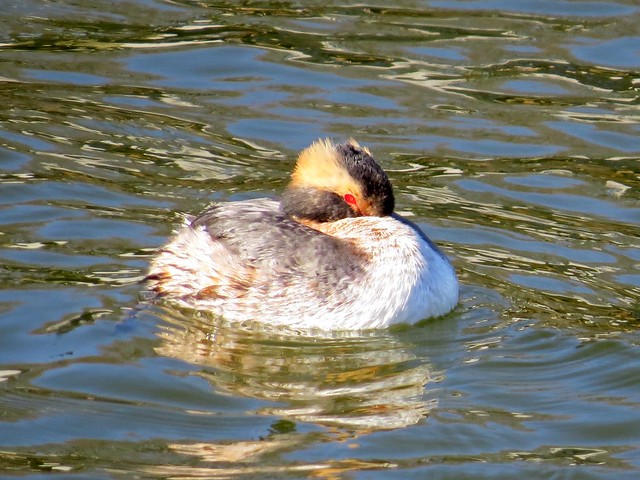
There were a few other birds near the grebe--Turkey Vultures and Redheads.
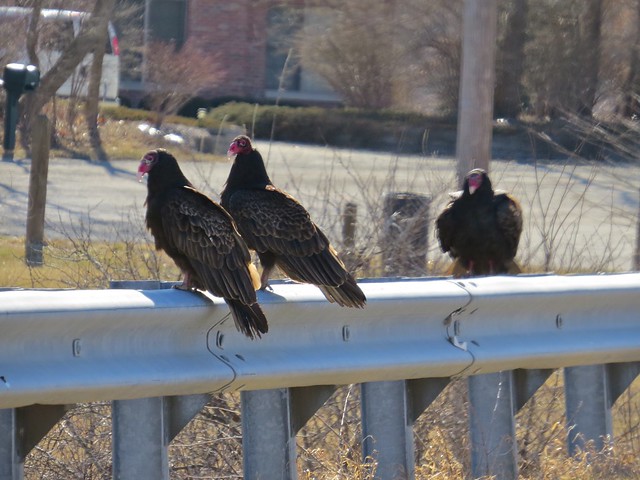

Then I saw this Horned Lark near Salem Ranch in Flanagan, IL. Unfortunately, the light haze prevented me from getting a clear shot.

So why do some birds have "horns?" They are not actually "horns" in the sense of being part of their skeletal structure. Nor are they ears as they are called on some other related birds such as the Long-eared Owl, or the Eared Grebe. The true ears of an owl are actually located on the sides of the head rather than the top. The so called "horns" or "ears" are actually tufts of feathers, which the birds can move. Owls can make these feather tufts stand straight up or pull them back so that they are barely visible.
So if they are not actually horns or ears, what function do these tufts of feathers have? There are several theories as to their purpose for owls, including non-vocal communication, identification, camouflage, and intimidation. Grebes only have "horns" or "ears" during the breeding season, which may indicate that in grebes, they may play a role in attracting a mate. As for Horned Larks, I do not know the purpose of their horns. Perhaps it is merely to reflect the artistry and glory of their Creator.
I do not know of any North American birds with true horns, but American White Pelicans have a protrusion on the top of their bills only during the breeding season. They shed these "plates" when the breeding season ends. In this photo the protrusion is not as round in shape as it normally is on these birds. I photographed this pelican at Lake Bloomington on March 24.
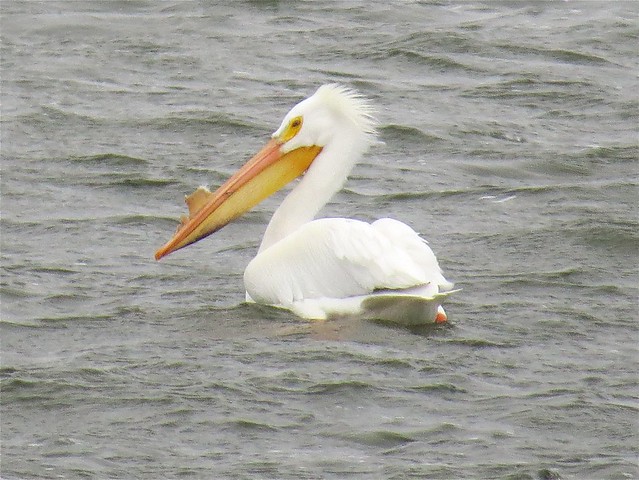
No comments:
Post a Comment